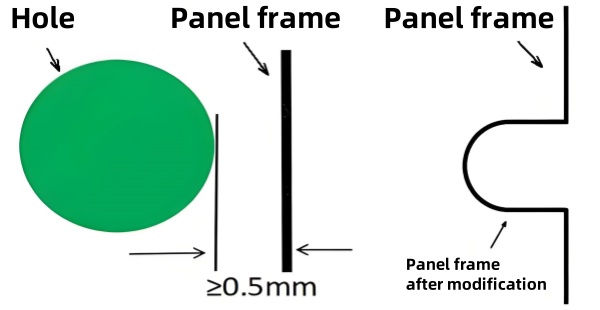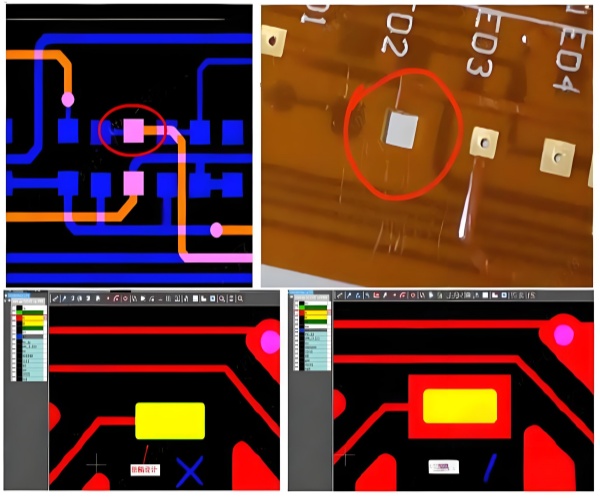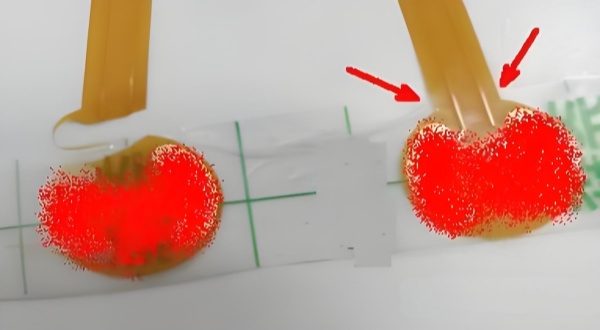FPC Flexible PCB Design Guide: 8 Key Points You Must Know
 03 Jun 2025 15:48:06 GMT
PCBASAIL
03 Jun 2025 15:48:06 GMT
PCBASAIL
FPC flexible board, namely Flexible Printed Circuit Board, is a type of printed circuit board made from flexible substrates, often referred to as soft circuit boards or flexible circuit boards. FPC flexible boards have now been widely used in modern electronic products, and it is believed that everyone has come into contact with them to some extent.
FPC is thin, lightweight, and bendable, and can be processed into any shape and size, complementing FR-4 PCB rigid boards. However, since it is different from rigid PCB boards, there are some special considerations in design. Today, we will discuss these.
Today, we will mainly introduce the key design points of FPC, which are divided into 8 aspects:
FPC Design Pitfall Avoidance Guide
Drilling, board frame, circuit, solder mask, and text design for flexible boards are the same as those for PCBs, except that stiffener layers need to be added on the back of components and at interface positions. However, there are also some special considerations, which are introduced one by one below.
1. Outline and Drilling Design
(1) The minimum distance from a through-hole to the board frame line is 0.5mm. If less than 0.5mm, it should be changed to a U-shaped hole (the hole is connected to the board frame).
(2) The distance from a via to the solder mask opening should be at least 0.2mm; otherwise, copper may be exposed at the hole edge.
(3) It is not recommended to design vias-in-pad for FPC. FPC cannot perform resin plugging, and vias-in-pad may cause solder leakage.

2. Circuit Design
(1) Oxidation of large copper surfaces: Due to the design of large copper surfaces, air is difficult to evacuate during film lamination. Moisture in the air reacts with the copper surface under high temperature and pressure to cause oxidation, resulting in poor appearance, although functionality is not affected. To avoid this issue, it is recommended to design grid copper cladding or add solder mask openings on large copper surfaces.
(2) Try to avoid designing independent solder pads: As shown in the figure below, the circuit solder pads are independent and overlapping on both sides. Since the intermediate substrate of FPC is only 25μm, the pads are prone to detachment. It is recommended to add copper cladding and connect the four corners of the pads to the copper cladding with connecting lines. The pads on the upper and lower sides should be staggered to increase bonding strength.

(3) Pad detachment: Connector seat pads are relatively independent and prone to detachment. It is recommended to use pressed PAD design.
(4) Try to avoid designing large areas of exposed copper, as this may cause wrinkles.
(5) FPC uses coverlay as the solder mask layer. The coverlay needs to be pre-opened and then bonded. There should be a 0.2mm spacing between the solder pad and the trace, and the solder mask bridge should be at least 0.5mm, i.e., the spacing between two solder pads should be at least 0.5mm to maintain the bridge. Otherwise, it is recommended to open a full window and accept exposed traces.
(6) As shown in the figure below, if the cable traces are sparse, the corners are prone to tearing. It is recommended to add anti-tear copper strips on the board edge or add grid copper on the back.

(7) The circuit grid is preferably laid at a 45-degree angle for better signal transmission. The recommended line width and spacing are 0.2/0.2mm.
3. Edge Gold Finger Design
(1) For pluggable fingers: High-temperature carbonization at the board edge during laser cutting may cause micro-shorts between gold fingers. The gold fingers need to be recessed by 0.2mm (generally uniformly recessed; special requirements should be specified).
(2) For soldering fingers: Vias on the in-board solder pads should not be arranged in a single row to prevent stress concentration on the vias, which may cause breakage.
(3) The upper and lower coverlays of soldering fingers should be staggered by more than 0.3mm to prevent breakage.
(4) Soldering fingers are recommended to have a solder mask film pressing PAD effect (i.e., extend the solder pad so that the coverlay presses the pad by more than 0.3mm).
(5) Solder mask opening for gold fingers: The opening is recommended to press the pad by more than 0.3mm to prevent disconnection between the gold finger PAD and the connection.
(6) If hollow boards are not supported, reverse fingers need to add pads and vias to achieve layer change.
(7) Since the solder mask film used in FPC cannot form solder mask bridges like green oil, when designing IC-type pads, there should be no extra copper cladding on the pads (as shown in the circled pad design below is unreasonable); otherwise, the pads will become larger, the spacing will decrease, and soldering short circuits may occur.
(8) Gold finger pads should be designed as independent pads. If there is copper cladding or traces on the finger pads, copper or traces will be exposed after the solder mask opening.
(9) The default tolerance for gold finger outline is ±0.1mm. If ±0.05mm is required, it needs to be confirmed when placing an order.
4. Solder Mask Design
(1) FPC connector seats are prone to detachment. Pressed PAD design is recommended.
(2) Bridging is required in the middle of the IC to retain the intermediate solder mask.
(3) Gold finger pads must have solder mask openings; otherwise, they cannot conduct with the connector.
(4) Soldermask is used as the default solder mask layer, and the correctness of the solder mask layer must be ensured.
(5) To prevent via copper from breaking during bending, FPC vias are generally defaulted to be oil-covered. If opening is required, it needs to be noted when placing an order.
(6) If the test point is designed as a via attribute, it may not be transferred correctly. Test points should not be set as via attributes or should have a separate opening for test points.
(7) Large exposed copper gold surfaces on the edge of double-sided boards may cause edge blackening. It is recommended to add a circle of coverlay on the board edge.
5. Silk Screen Design
(1) If there are character silk screens on the stiffener, "silk screen on stiffener" should be selected when placing an order to prevent process errors in production.
(2) Instruction text should not be designed inside the board, or it may lead to the next tragedy.
6. Panelization Design
(1) If the entire board is made of steel sheets, it is heavy, and the FPC is prone to stretching deformation, making chip mounting impossible. For boards with steel stiffeners, the minimum spacing between boards is recommended to be 3mm, the slot width is 0.5mm, and the connection point width is 1mm, with one added every 15mm or so. Note when placing an order: Each piece should be separated by paper, and shipped with cardboard clamping top and bottom.
(2) Panelization connection positions: Adding connection positions to gold fingers will cause uneven front ends of gold fingers.
(3) Too few connection points will cause boards to fall off easily. Each PCS should have at least 2 connection points, with a width of 0.8mm, specifically determined by board size—the larger the board, the more connection points.
(4) If the board is too small and there are too many connection points, it will be difficult to break the board. If SMT is not performed, each PCS only needs 2 connection points of 0.3mm for easy hand-breaking.
(5) Too low panelization utilization will lead to high quotations (as shown below, low utilization). The panel width should preferably be 119mm or 240/250mm. Third-party panelization is recommended.
(6) When the board size is too small, it may be sucked away by laser dust suction. It is recommended to deliver panels for boards smaller than 20×20mm, or perform depanelization after panel production.
7. Stiffener Design
Stiffening of flexible circuit boards refers to adding rigid materials to local areas of FPC to facilitate assembly. PI stiffeners are suitable for gold finger pluggable products; FR4 is suitable for lower-end products; steel sheets have good flatness and no deformation, suitable for products requiring chip mounting. See details in the Stiffener Specification Diagram.
(1) It is not recommended to use steel sheets as stiffeners for component insertion holes, as this may cause short circuits; additionally, steel sheets have weak magnetism and cannot be used with Hall elements; finally, steel sheets are not recommended for pluggable gold fingers.
(2) When placing an order for pluggable gold fingers, the total thickness requirement must be noted. The total thickness is generally specified in the connector specification. The thickness of the PI stiffener should not be directly calculated by subtracting the FPC board thickness from the total thickness.
(3) Stiffener opening design: refers to the stiffener avoiding underlying component holes or pads. It is best for the customer to design it themselves. By default, it is generally handled by avoiding pads by 0.3mm. If the remaining stiffener width after cutting is less than 2mm, it will be directly connected (i.e., no stiffener in this entire area). Special requirements should be noted.
(4) The height of the gold finger stiffener is recommended to be at least 1.0mm longer than the gold finger pads to prevent gold finger breakage during use.
(5) Both sides of the electromagnetic film may be conductive. If the lower electromagnetic film is not a single network, it is recommended to cancel the electromagnetic film design.
(6) For requirements on the grounding resistance of the electromagnetic film, the customer needs to design the grounding solder mask opening independently. By default, a solder mask window of more than 1.0mm is randomly added without requirements. Note: If the electromagnetic film is not grounded, it may absorb a large amount of electromagnetic waves, causing signal problems. Prototyping and verification are a must.
(7) Attaching steel sheets to solder pads will cause short circuits.
(8) Stiffener width: FR4 stiffeners with too small a width are prone to breakage and carbonization. It is recommended to change those with a minimum width of less than 5mm to PI or steel stiffeners. The minimum width of the adhesive backing should also be more than 3mm.
(9) There should be no stiffeners or adhesive backing around chip mounting pads, as this will prevent solder paste printing (if necessary, chip mounting should be done before attaching stiffeners or adhesive backing).
8. Board Thickness Specifications
The board thickness includes the coverlay, copper thickness, and substrate PI thickness. If there are copper-free areas or no coverlay on the board, the board thickness will be correspondingly reduced. Please pay special attention during design.



